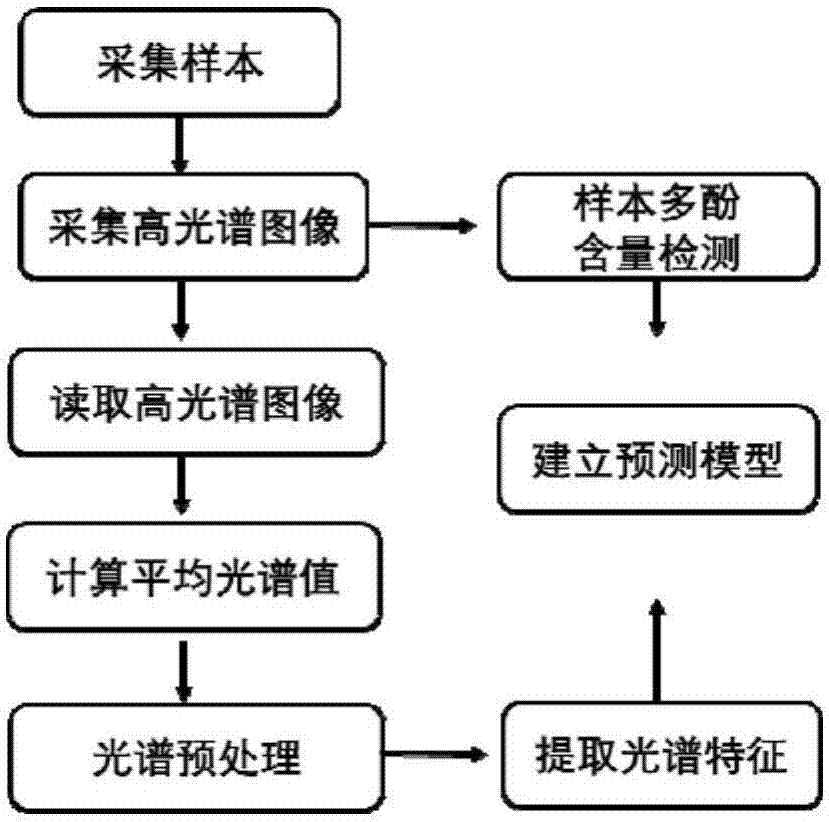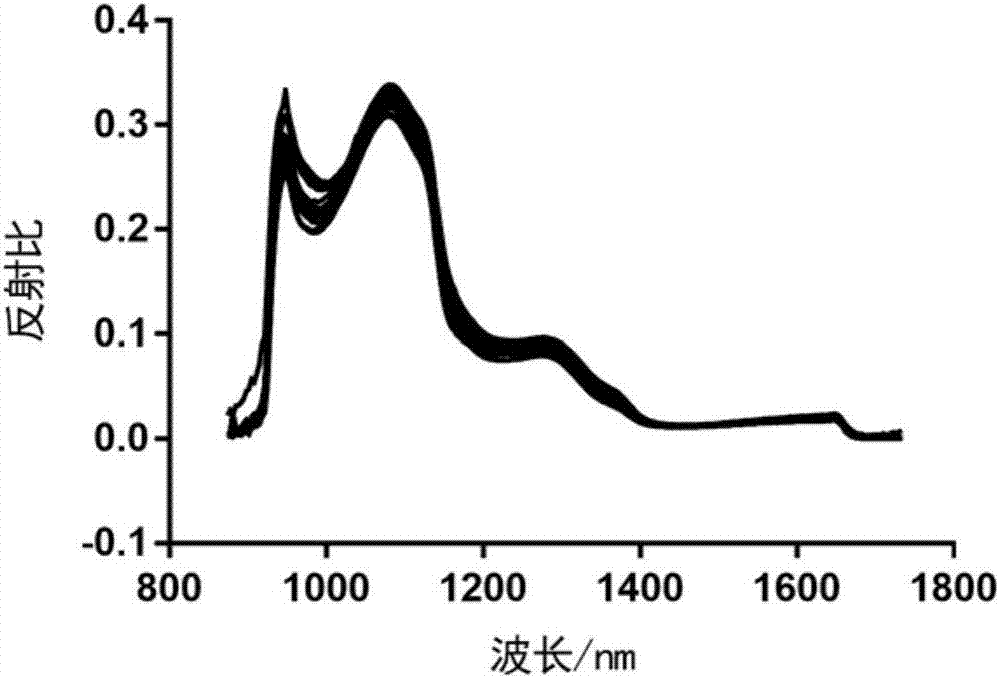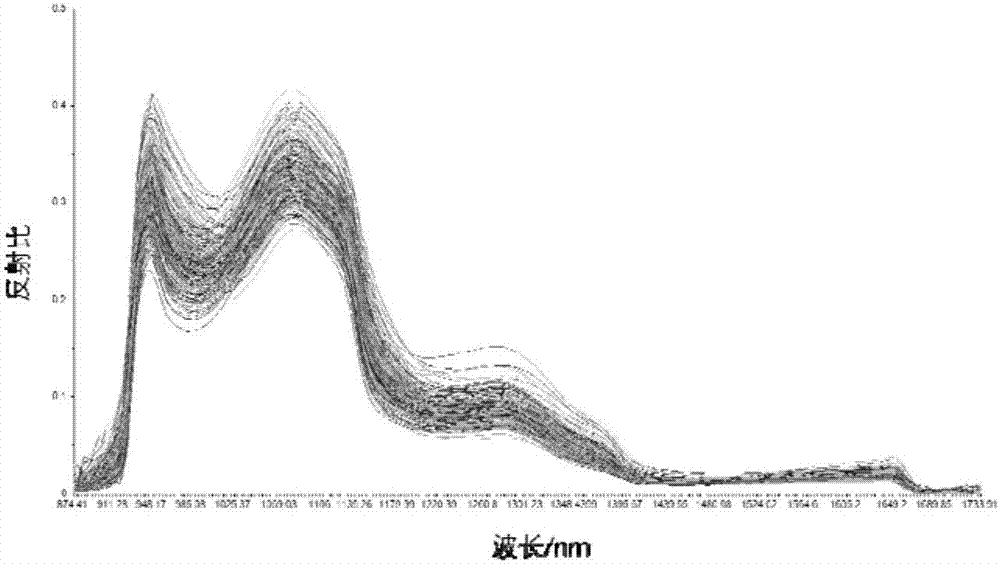Method for nondestructive testing of polyphenol content in waxberries based on near-infrared hyperspectral technique
A near-infrared hyperspectral and phenol content technology is applied in the field of non-destructive detection of polyphenol content in red bayberry based on near-infrared hyperspectral technology. It can solve the problems of destroying the detection sample and the difficulty of realizing rapid non-destructive detection of large sample sizes, and achieves an increase in detection rate. , Reduce the amount of data calculation and shorten the scanning time
- Summary
- Abstract
- Description
- Claims
- Application Information
AI Technical Summary
Problems solved by technology
Method used
Image
Examples
Embodiment 1
[0030] 1) Establishment of sample spectrum:
[0031] Collect different varieties of fresh bayberry samples (400) and randomly assign them to establish a calibration sample set (200) and a test sample set (200); the hyperspectral imaging system is used to perform spectral scanning on the samples in the calibration and test sample sets, in which the lens and The sample distance is 10cm, the exposure time is 0.5s, and the sample moving speed is 5mm / s. Hyperspectral images in the near-infrared band of 1000-1600nm are collected to obtain the calibration and inspection sample set spectra;
[0032] 2) Determination of sample polyphenol content:
[0033] The content of polyphenols in bayberry samples was determined by the Folin-phenol method, the samples were extracted with 90% ethanol, an appropriate amount of extract was reacted with Folinol, detected at a wavelength of 760nm, and gallic acid was used as a standard for quantification;
[0034] 3) Preprocessing of sample spectra:
...
Embodiment 2
[0043] The method for non-destructive determination of polyphenol content in red bayberry based on near-infrared hyperspectral is characterized in that the steps of the method are as follows:
[0044] 1) Establishment of sample spectrum:
[0045] Collect different varieties of fresh red bayberry samples (600) and randomly assign them to establish a calibration sample set (400) and a test sample set (200); use a hyperspectral imaging system to perform spectral scanning on the samples in the calibration and test sample sets, in which the lens The distance from the sample is 40cm, the exposure time is 3s, and the moving speed of the sample is 15mm / s, and the hyperspectral image in the near-infrared band of 900-1700nm is collected to obtain the spectrum of the calibration and inspection sample set;
[0046] 2) Determination of sample polyphenol content:
[0047] The folin-phenol method was used to determine the polyphenol content in bayberry samples. The samples were extracted wi...
Embodiment 3
[0057] The method for non-destructive determination of polyphenol content in red bayberry based on near-infrared hyperspectral is characterized in that the steps of the method are as follows:
[0058] 1) Establishment of sample spectrum:
[0059] Collect different varieties of fresh red bayberry samples (300) and randomly distribute them to establish a calibration sample set (200) and a test sample set (100); the hyperspectral imaging system is used to perform spectral scanning on the samples in the calibration and test sample sets, in which the lens and The sample distance is 20cm, the exposure time is 2s, the sample moving speed is 10mm / s, and the hyperspectral image in the near-infrared band of 900-1700nm is collected to obtain the calibration and inspection sample set spectrum;
[0060] 2) Determination of sample polyphenol content:
[0061] The content of polyphenols in bayberry samples was determined by the Folin-phenol method, the samples were extracted with 70% ethano...
PUM
 Login to View More
Login to View More Abstract
Description
Claims
Application Information
 Login to View More
Login to View More - R&D
- Intellectual Property
- Life Sciences
- Materials
- Tech Scout
- Unparalleled Data Quality
- Higher Quality Content
- 60% Fewer Hallucinations
Browse by: Latest US Patents, China's latest patents, Technical Efficacy Thesaurus, Application Domain, Technology Topic, Popular Technical Reports.
© 2025 PatSnap. All rights reserved.Legal|Privacy policy|Modern Slavery Act Transparency Statement|Sitemap|About US| Contact US: help@patsnap.com



